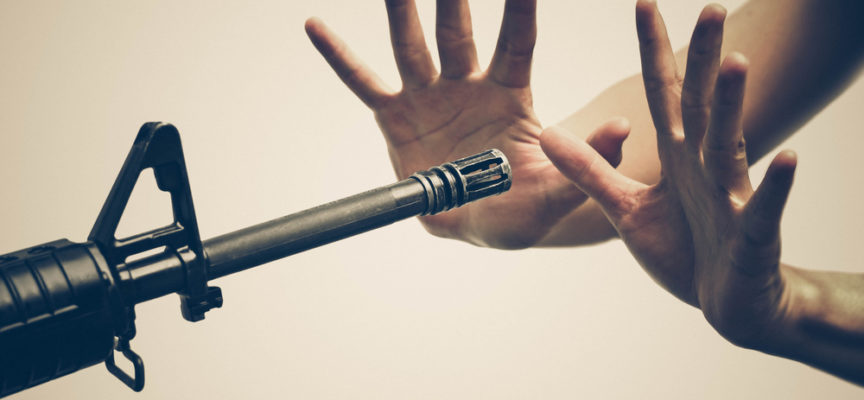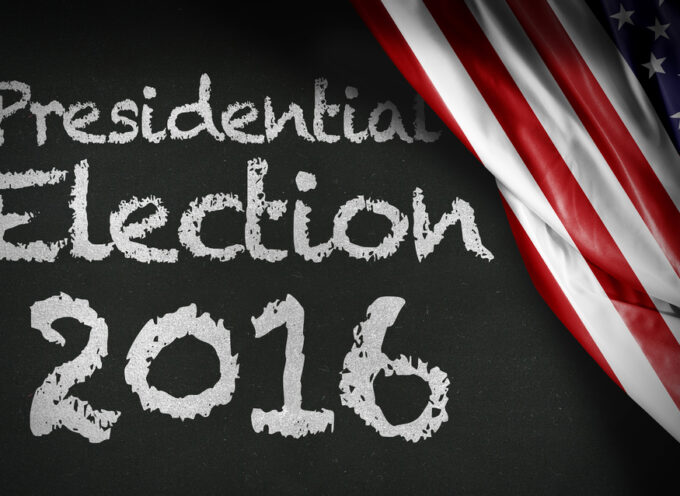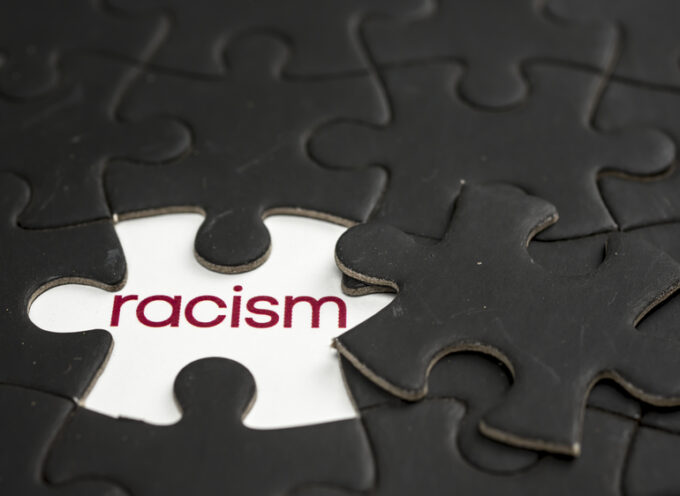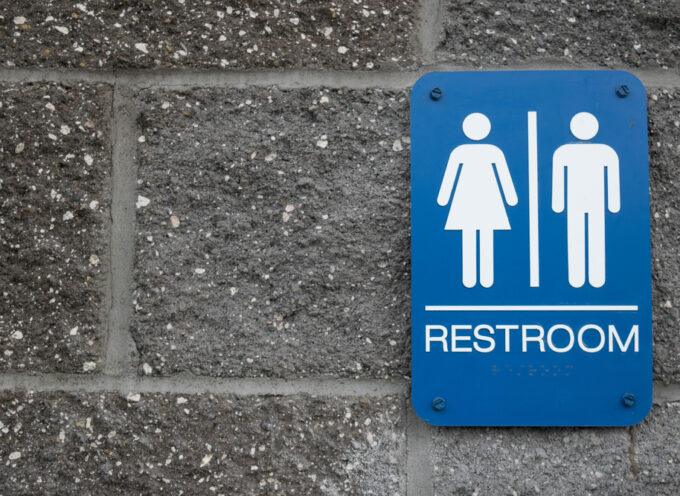On Wednesday afternoon, a shooter rained gunfire on students at a Florida school. The gunman, Nikolas Cruz, entered the campus armed with an AR-15-style rifle and shot students in the hallways and elsewhere on school grounds.
In the face of horrors like this, we want comfort, answers, solutions. We want to be told that this type of shooting is an anomaly and unlikely to happen again. We want to know “where God is” in the midst of such evil. We want to know, in retrospect, what we could have done to stop this evil act.
More to the point, we want to know what actions we can to protect against this type of massacre in the future. Given the horror of this and similar tragedies, and the bitter partisan disagreement about how to prevent them, it is incumbent upon us to find a way to move forward together.
A constructive way forward will involve at least three components.
First, we must engage in a sustained national debate about gun rights and gun control. In the aftermath of shootings such as the one at Parkland, our national “debate” is often carried out via social media and is reduced to clichéd arguments and unfair accusations.
The worst voices on the Left will say that Republicans are controlled by the NRA, don’t care about children, and have blood on their hands. The most tone-deaf voices on the right will fail to address the horror of the situation, opting instead to merely point out that “guns don’t kill people, people kill people.”
But, as Liz Peek argued recently, it’s time for an honest, civil, and sustained national debate about gun rights and gun control. If rapid-fire weapons hadn’t been employed in recent shootings such as Las Vegas, Orlando, or Parkland, fewer people would have been killed. For ten years, this type of rapid-fire weapon was banned. The ban expired in 2004 and hasn’t been renewed.
We need to carry out the debate in its various dimensions. Legally, is a ban on rapid-fire weapons in violation of the Second Amendment? Ideologically, is it a slippery slope in which the end result will one day be confiscation? Practically, will increased gun control reduce violence overall by making it harder for “shooters” to purchase guns or will it increase vulnerability by making citizens defenseless?
If our national response to shootings continues to be characterized by sound-byte arguments and bad-willed bipartisan accusations, things will only get worse. But if we can make the transition to a sustained and civil debate about solutions, we stand a good chance of making things better.
Second, we must address mental health in its psychiatric and moral dimensions. There is ample evidence that Nikolas Cruz had long alarmed acquaintances and authorities in Parkland by his disturbing behavior. He was described as cold-hearted, deeply disturbed, and emotionally broken.
In the instance of severe chemical imbalances, appropriate medication and treatment could bring stability to the patient. The National Institute of Mental Health is a repository of data related to psychiatric treatment and intervention in the cases of severe mental illness, and should be capitalized upon.
But our discussion of mental illness must not be limited to the “disease” model of mental illness. We cannot let ourselves think that terrorists are “evil” but American shooters are “ill.” To do so is not only hypocritical but foolish. It’s high time our nation recognized the way evil takes root in the human heart and the way America’s cultural institutions—families, churches, schools, political parties, entertainers—must work to counteract the moral decay in our nation.
Third, we must consider implementing active-shooter training in our nation’s schools. School administrators regularly schedule fire and tornado drills, but most do not schedule active-shooter drills.
Most schools avoid holding active-shooter drills because they don’t want to frighten their students. Unfortunately, however, we must face up to the horrific reality that school shootings are on the increase and probably will not abate any time soon. During school shootings, most casualties occur during the first five minutes. If we can coach students on how to run, hide, fight, and report the shooters, we stand a better chance of reducing casualties.
In a statement after the shooting, President Trump encouraged the nation to “create a culture in our country that embraces the dignity of life.” He’s right that the deep undercurrent in all of this is lack of respect for the dignity of human life, one that characterized the actions of Nikolas Cruz but also in some ways permeates our culture as a whole.
The increase in mass shootings is a high-priority “pro-life” issue because it involves the taking of innocent lives. People on both sides of the gun rights divide understand this fact, and people on both sides want to take action to reduce the likelihood of future shootings.
For that reason, we must resist the temptation toward partisan cheap shots and cliched arguments, and instead call our nation’s leaders to lead the way in a sustained, civil, and constructive national debate about gun rights and gun control, mental illness in its psychiatric and moral dimensions, and the potential benefits of active-shooter training in our nation’s schools and public institutions.
Subscribe
Never miss a post! Have all new posts delivered straight to your inbox.








“For ten years, this type of rapid-fire weapon was banned. The ban expired in 2004 and hasn’t been renewed.”
What ‘type’ of firearm are you referring to? Rapid-fire weapons? What is a rapid-fire weapon? This terminology is not used by anyone familiar with firearms. Any firearm can be rapid-fire. The common terms are semi-automatic and automatic. The distinction being determined by how many rounds can be fired with a single depression of the trigger.
The 1994 assault weapon ban did not ban rapid-fire weapons. Since rapid-fire doesn’t really mean anything. It was soley focused on semi-automatic rifles, automatic weapons were already banned. The 1994 act prohibited the mfg. and sale of ‘assault’ weapons. The distinguishing features being: firearms that had a flash-hider, bayonet-lug, and/or collapsing stock. Firearm communities referred to these post-ban rifles as ‘neutered.’ There is no functional advantage or disadvantage between either post-ban or pre-ban firearms. Both are semi-automatic.
If a firearm was mfg. before the ban took effect, it was grandfathered in and perfectly legal to own, buy, sell, etc.
The ban also prohibited the mfg. of magazines that could hold more the 5 rds. However, pre-ban mags were still perfectly legal. Also, importing magazines became common.
Dear Scott,
Thank you for the lesson on the nomenclature of rifles. The conversation however is about saving the lives of students in their classrooms.
Dana
How exactly is it that such a “national conversation” should functionally, be held? As you said, it is now being held on social media. That is fundamentally toxic for almost any “national conversation.” It seems to me that the power of social media needs to be be emasculated, and THEN, only THEN, can we have a productive “national conversation.” But does a healthy, productive, meaningful, national conversation look like, practically speaking?
Great question Paul. You make a very good point. My best shot at an answer is something like this: individual Americans across the nation need to lead the way by carrying on constructive conversations in the avenues we have, whether that is coffee shops, dinner tables, Facebook or Twitter. We need to be constructive even if the people we are talking with are not. Additionally, we need to find ways of supporting the public figures who are exemplary in constructive and meaningful discussion and debate. This could mean (1) voting for the right people, (2) refusing to watch the talk shows of people who peddle in half-truths, mockery, and vitriol, and (3) retweeting and sharing the Facebook posts of exemplary people. There is more to say, but these are a few of my thoughts… thanks for weighing in.
I speculate if our Founding Fathers had known about semi-automatic rifles and active shooters the 2nd Amendment would be different.